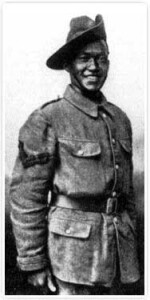‘Ayo Gorkhali!’
Gurkha VC Statue in Aldershot
Learning of a new soldier Victoria Cross statue, to be unveiled on Saturday 25 September 2021, has brought back memories of my work with the Piper James Cleland Richardson VC Statue Committee in Chilliwack, B.C. Knowing the many hours it has taken working with a team dedicated to seeing the results, fundraising, choosing and working with an artist, research, discussions, announcements, creating and critiquing the maquette, working with the foundry, working with landscaping, creating a care and maintenance program, multi-media…I send my best wishes and congratulations to the Greater Rushmoor Nepali community in Aldershot whose statue has arrived! Well done everyone…I will follow along in due course for a visit…do enjoy the day.
The work depicts Gurkha Kulbir Thapa Magar who became the first Nepalese Gurkha recipient of a bronze cross for valour…the Victoria Cross. The statue depicts Magar carrying a British soldier of the Leicestershire Regiment to safety. Kulbir Thapa Magar served with the 2nd Queen Alexandra’s Own Gurkha Rifles when on 25/26 September 1915 at Fauquissart, France (Battle of Loos) he performed the deeds that led to the award of the Victoria Cross announced in the London Gazette 18 November 1915.
For most conspicuous bravery during operations against the German trenches of Mauquissart (sic).
When himself wounded on the 25th September, 1915, he found a badly wounded soldier of the 2nd Leicestershire Regiment behind the first line German trench, and though urged by the British soldier to save himself, he remained with him all day and night. In the early morning of the 26th September, in misty weather, he brought him out through the German wire, and leaving him in a place of comparative safety, returned and brought in two wounded Gurkhas one after the other. He then went back in broad daylight for the British soldier and brought him in also, carrying him most of the way and being at most points under the enemy’s fire.
The award was one of several Victoria Crosses announced in the London Gazette including Piper Daniel Laidlaw 7th King’s Own Scottish Borderers. Kulbir Thapa Magar’s Victoria Cross is exhibited at the Gurkha Museum, Winchester, Hampshire, England. The statue has been placed at Princes Garden, Aldershot near to the statue of an Airborne soldier. Both statues were sculpted by Amy Goodman.
Kulbir survived the Great War following service on the Western Front and Egypt. A film based on Kulbir Gurkha: Beneath the Bravery was released in 2020. Twenty-six soldiers of the Gurkha Regiments have been awarded the Victoria Cross of which 13 were awarded to Nepalese Gurkhas and 13 to British Army officers serving with them.


Comments